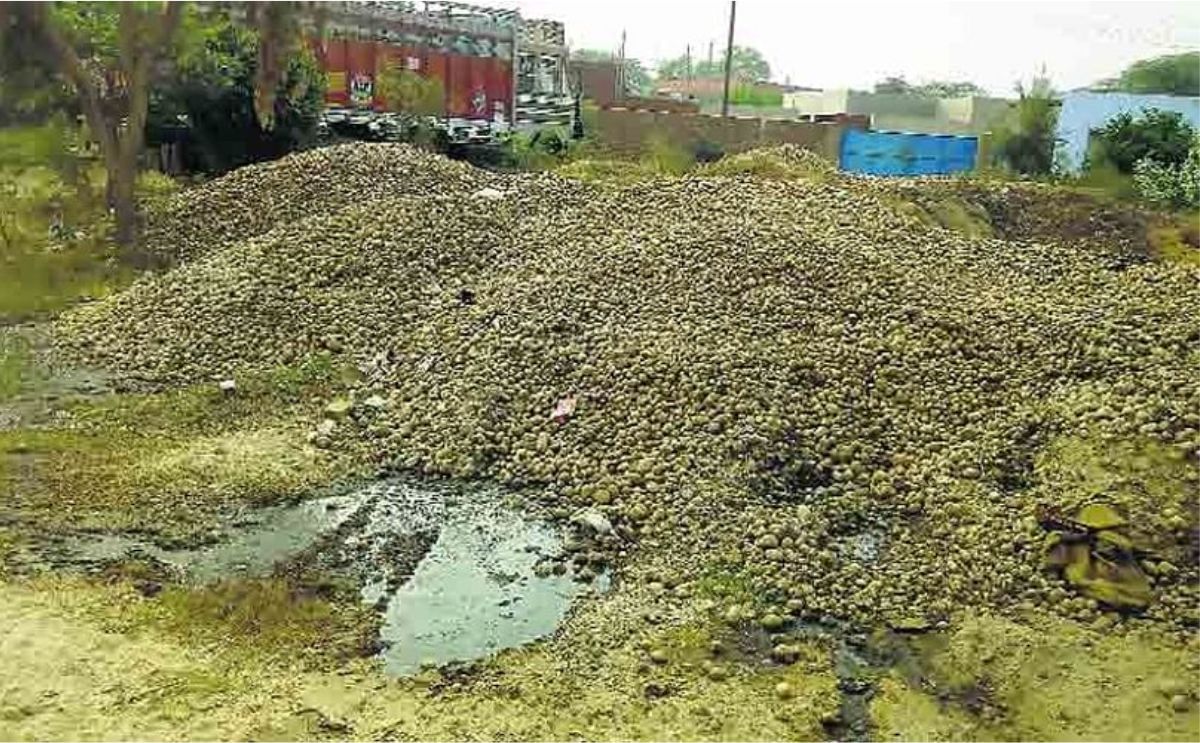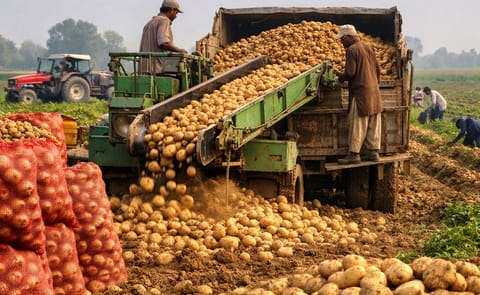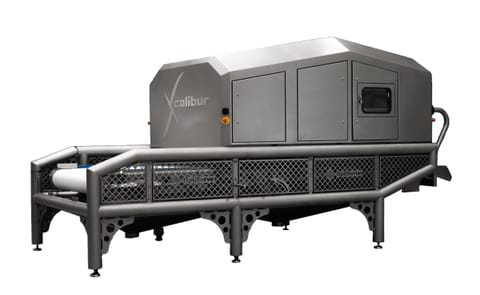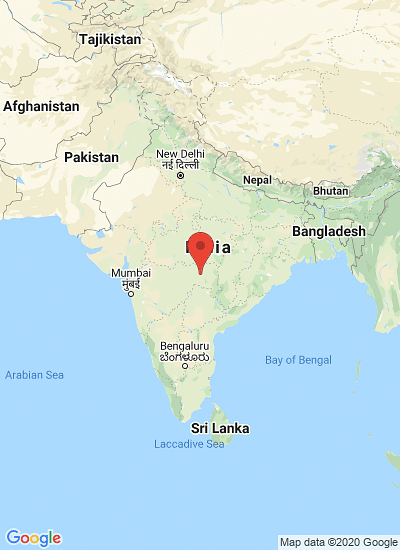Old potatoes dumped outside a cold store unit at Sadabad in Uttar Pradesh, India because there are no buyers...
主标签
Large amounts of potatoes remain unsold in parts of Uttar Pradesh

Potato farmers in South-west Uttar Pradesh (Aligarh, Hathras, Mathura, Agra, Firozabad, Etawah, Mainpuri, Kannauj and Farrukhabad) account for roughly a fifth of India’s total potato production.
In a typical year, they plant in mid-October and early November. Once they harvest, only 15-20 per cent of this crop is sold at the time of its harvesting towards February-March. Farmers keep the remaining 80-85 per cent in cold stores - where the potatoes are maintained at 4-5 degrees Celsius - and make staggered sales through the summer and monsoon months.
Pradeep Chaudhary alias Guddu, owner of Om Sheet Grah Pvt Ltd, a cold storage unit at Sadabad town in Uttar Pradesh’s Hathras district:
“This time round, probably 99 per cent of the potatoes were put into cold storage, given the low prices and lack of buyers during harvest time.”
“Farmers thought they would realise better rates later in the season.”
But it hasn’t worked that way.
Currently, the normal large (“mota”) potatoes are being sold from cold stores at Rs 200-225 per bag (Rs 4-4.5/kg). The medium “gulla” tubers are fetching just Rs 90-100 a bag (Rs 1.80-2/kg), while being even lower, at Rs 50-60 a bag (Rs 1/kg), for small “kirri” potatoes.
And the farmer isn’t the only loser. Guddu’s cold store can stock up to three lakh bags of potatoes. 90 per cent of this would normally have been disposed of by end-October, with the air-conditioning, too, shut with the winter arriving in the second half of November. This would allow for maintenance over the next two months and enable storing of the new crop from February.
The current year, though, has been different. On October 31 - when the season technically ends and cold stores cannot run without obtaining renewal licences from the state horticulture department - Guddu’s unit was saddled with unsold stocks of 80,000-odd bags. Guddu:
“Most cold stores have anywhere between 25 to 35 per cent of last season’s potatoes that farmers have kept and are not re-claiming.”
The reason for farmers not taking back their stored potatoes is simple. Cold stores charge around Rs 110 for every bag, whether it is kept for one month or eight months.
Besides, they finance farmers to cover their cost of harvesting, grading and bagging (Rs 45-50), loading (Rs 3) and transport from the field to the store (Rs 20). In many cases, the credit — usually at 1.5 per cent interest per month — extends even to the bardana or jute bags costing Rs 22-23 each.
Puran Singh, a farmer:
“If the borrowed money with interest is also included, we have to pay Rs 200 or more on every bag to the store owner.”
“If the price we are getting does not cover even that, why take back the bag at all?”
This 60-bigha (12-acre) farmer from Tambka village in Mathura district’s Mahavan tehsil still has 700 out of his 2,000 bags harvested during March lying at Susheela Cold Storage in Agra. Even on the remaining 1,300 bags, the money realised from sales, at Rs 125 to Rs 225/bag, has gone entirely to pay the store owner, leaving him with nothing.
Chaudhary Pushpendra Singh, president of Kisan Shakti Sangh, a farmer advocacy organisation:
“The cold stores will eventually recover their Rs 110 charge and also much of what they have lent to farmers with interest.”
“For the farmer, a price of Rs 200 per bag (Rs 4/kg) may pay his liabilities to the cold store, but will not even cover cultivation costs.”
He reckons the total cost of cultivating potatoes at over Rs 10,000 a bigha, which, at an average 40 bags/bigha yield, translates into Rs 5 per kg.
If to this, another Rs 4 is added towards harvesting, bagging, transport and cold storage costs, the farmer will just about start making money at a price of Rs 9/kg.
Chaudhary Pushpendra Singh:
“The breakeven goes up further by Rs 2/kg if land is leased at the existing rates of Rs 4,000 per bigha. For potato cultivation to be profitable, the farmer has to get about Rs 15/kg.”
“Right now, he cannot afford to even buy new seed potatoes.”
“Most farmers this season have used their last year’s stored crop as seed.”
But why are prices continuing to rule low even now, when cash has supposedly returned with the Reserve Bank of India printing new notes (as low prices initially were said to result from the demonetisation)? Guddu:
“This is a business that always operated on cash. While the notes may be back, you are still not allowed to make daily withdrawals or deposits of more than Rs two lakh.”
“These restrictions, plus the fear of being tracked by the income tax department, have made traders wary of buying and stocking up produce.”
The effects of it are being felt in places such as Hathras. This district alone has about 150 operational cold stores, handling an average of two lakh bags each.
At last year’s average realisation of Rs 400 per bag (Rs 8/kg) for all varieties — including gulla and kirri — the value of this entire produce would have been Rs 1,200 crore. But at Rs 150 per bag (Rs 3/kg), the same 3 crore bags from a single district would be worth Rs 450 crore.
Pushpendra Singh:
“If this calculation is extended to other potato-belt districts, you can imagine how much value destruction has taken place in the last one year.”
“And the loser is not just the farmer, but also those who sell and provide services to him.”







